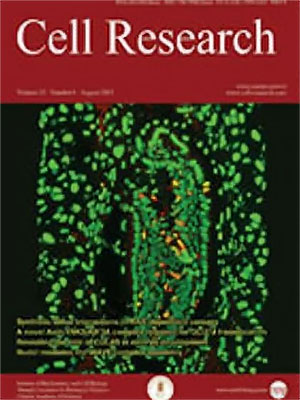
Volume 14, No 5, Oct 2004
ISSN: 1001-0602
EISSN: 1748-7838 2018
impact factor 17.848*
(Clarivate Analytics, 2019)
Volume 14 Issue 5, October 2004: 415-422
ORIGINAL ARTICLES
Ectopic expression of clusterin/apolipoprotein J or Bcl-2 decreases the sensitivity of HaCaT cells to toxic effects of ropivacaine
Evangelos KONTARGIRIS1, Evangelos KOLETTAS1*, Athina VADALOUCA2, Ioannis P. TROUGAKOS3,Efstathios S. GONOS3, Vasiliki KALFAKAKOU1*
1Laboratory of Experimental Physiology, University of Ioannina Medical School, 45110 Ioannina, Greece
2Department of Anesthesia, Pain Relief and Palliative Care, University Clinic, Areteion Hospital, Athens, Greece
3Laboratory of Molecular and Cellular Aging, Institute of Biological Research and Biotechnology, National Hellenic Research Foundation, 11635 Athens, Greece
Correspondence: Evangelos Kolettas Vasiliki Kalfakakou(ekoletas@cc.uoi.gr vkalfaka@cc.uoi.gr)
Local anesthetics inhibit cell proliferation and induce apoptosis in various cell types. Ropivacaine, a unique, novel tertiary amine-type anesthetic, was shown to inhibit the proliferation of several cell types including keratinocytes. We found that Ropivacaine could inhibit the proliferation and induce apoptosis in an immortalized human keratinocyte line, HaCaT, in a dose- and time-dependent manner and with the deprivation of serum. The dose-dependent induction of apoptosis by ropivacaine was demonstrated by DNA fragmentation analysis and the proteolytic cleavage of a caspase-3 substrate — poly (ADP-ribose) polymerase (PARP). In addition, ropivacaine downregulated the expression of clusterin/apoliporotein J, a protein with anti-apoptotic properties, in a dose-dependent manner, which well correlated with the induction of apoptosis of HaCaT cells. To investigate the role of clusterin/apoliporotein J in ropivacaine-induced apoptosis, HaCaT cells overexpressing clusterin/apoliporotein J were generated and compared to cells expressing the well established anti-apoptotic Bcl-2 protein. Ectopic overexpression of the secreted form of clusterin/apoliporotein J or Bcl-2 decreased the sensitivity of HaCaT cells to toxic effects of ropivacaine as demonstrated by DNA fragmentation, the proteolytic cleavage of PARP and by a reduction in procaspase-3 expression. Furthermore, the downregulation of endogenous clusterin/apolipoprotein J levels by ropivacaine suggested that this might be one mechanism by which ropivacaine induced cell death in HaCaT cells. In conclusion, the ability of ropivacaine to induce antiproliferative responses and to suppress the expression of the anti-apoptotic protein clusterin/apolipoprotein J, combined with previously reported anti-inflammatory activity and analgesic property of the drug, suggests that ropivacaine may have potential utility in the local treatment of tumors.
FULL TEXT | PDF
Browse 1919


